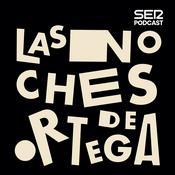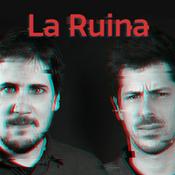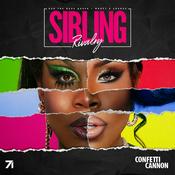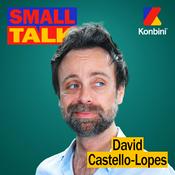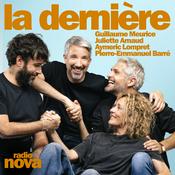Episodios disponibles
5 de 274
- Estado de Hidalgo RantsRants about the plant life of the state of Hidalgo Mexico, including but not limited to Cephalocereus senilis, Fouquieria fasciculata, Fouquieria purpusii, Magnolia scheidiana, obsidian piles, and more. All episodes of The Crime Pace podcast are available for ad-free listening on the Patreon at : https://www.patreon.com/CrimePaysButBotanyDoesntMexico Plants Checklist : https://drive.google.com/file/d/1a5GcJ39ysO_n2XbsazLZeyF9H1wDi4Zx/view?usp=drivesdkDiversidad Floristica Oaxaca : https://drive.google.com/file/d/1-EXwZV3FOd5sahIE2wlnUmqN_JcLC4bB/view?usp=drivesdk--------1:16:49
- San Luis Potosí RantsIn this episode we rant about cacti that grow in ephemeral lagoons, 1500 year old Montezuma Cypresses, cryptic cacti that grow in salty mud basins, Mexican Jays dispersing weeping pinion pine seeds, a fern that grows out of marble, how the summer-wet/winter-dry habit affects some carnivorous plant forms, and more...Reminder that episodes of this podcast are available ad-free on the Crime Pays Patreon at www.patreon.com/crimepaysbutbotanydoesnt--------1:12:15
- Climate Town with Rollie WilliamsAd-Free episodes of the Crime Pays But Botany Doesn't podcast are available on the Patreon atwww.patreon.com/CrimePaysButBotanyDoesntRollie Williams is host of the youtube series "Climate Town". In this episode, we talk about "supplying demand" Capitalism, the Oil Lobby, why certain interests are just so dang good at propaganda, how the CEOs became the heroes and the scientists became the bad guys, palm oil plantations, ethanol, government-sponsored cheese caves and more.--------1:37:56
- Please Don't "Save the (honey)Bees"Reed Booth and his assistant Hosh are killer bee exterminators based out of Bisbee, Arizona. In this episode we talk about the ferocity of the scutellata hybrid (aka "killer bees"), the fact that this hybrid doesn't occur in nature ANYWHERE, why most feral honeybee colonies end up being dominated or taken over by the scutellata hybrids, the reductions in native bee and plant biodiversity that the presence of both feral and domesticated honeybees results in, and why it may just not be a good idea to keep backyard honeybees anymore (at least in North America).--------1:53:33
- Native Bee Diversity w/ Krystle HickmanAd-Free episodes of the podcast are available on the Patreon at : www.patreon.com/CrimepaysbutbotanydoesntKrystle Hickman is a biologist, native bee researcher, and conservationist from Los Angeles, California and author of the book "The ABCs of California's Native Bees". In this 2-hour conversation we talk about how to identify bees to genus, different groups of native bees (IE longhorn bees, cactus bees, leaf cutter bees, sweat bees, Euglossine bees, and more), specialist relationships between native bees and native plants, how native bees could be utilized to pollinate human crops simply if farmers created hedgerows of native plants in between their fields, how honeybees reduce native bee species diversity as well as reducing fitness in native plants, how to get good macro photos and more.--------2:11:29
Más podcasts de Humor
Podcasts a la moda de Humor
Acerca de Crime Pays But Botany Doesn't
Why do some plants grow where they do? How can geology cause new plant species to evolve? Why are some plants pollinated by flies, some by bats, some by birds, and others by bees? How does a plant evolve to look like a rock? How can destroying lawns soothe the soul? This is a show about plants and plant habitat through the lens of natural selection and ecology, with a side of neurotic ranting, light humor, occasional profanity, & the perpetual search for the filthiest taqueria bathroom.
Sitio web del podcastEscucha Crime Pays But Botany Doesn't, El búnquer y muchos más podcasts de todo el mundo con la aplicación de radio.es
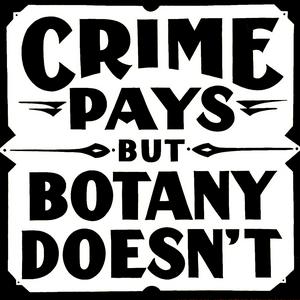
Descarga la app gratuita: radio.es
- Añadir radios y podcasts a favoritos
- Transmisión por Wi-Fi y Bluetooth
- Carplay & Android Auto compatible
- Muchas otras funciones de la app
Descarga la app gratuita: radio.es
- Añadir radios y podcasts a favoritos
- Transmisión por Wi-Fi y Bluetooth
- Carplay & Android Auto compatible
- Muchas otras funciones de la app


Crime Pays But Botany Doesn't
Escanea el código,
Descarga la app,
Escucha.
Descarga la app,
Escucha.

